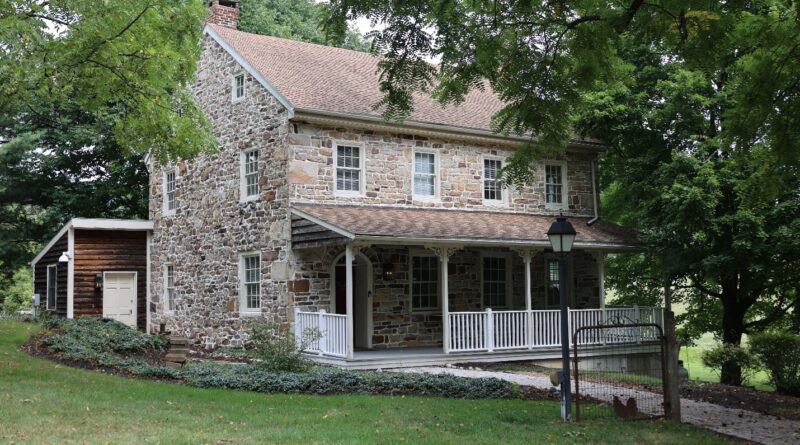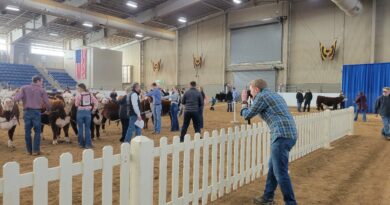History Preserved: The Boyer House
The Summerdale building, and its Boyer family occupants,
are integral parts of the village and of Central Penn history

By Dylan Bowman
Knightly News Co-president
dylan.bowman@mymail.centralpenn.edu
Pennsylvania is known for many things. For example:
- Coal
- Hershey’s chocolate, and Hersheypark
- The Little League World Series
- Agriculture, and the state’s enormous annual farm show
- Bad roads
- Cheesesteaks
- Steel
- And of course, a vast number of local chip and pretzel companies.
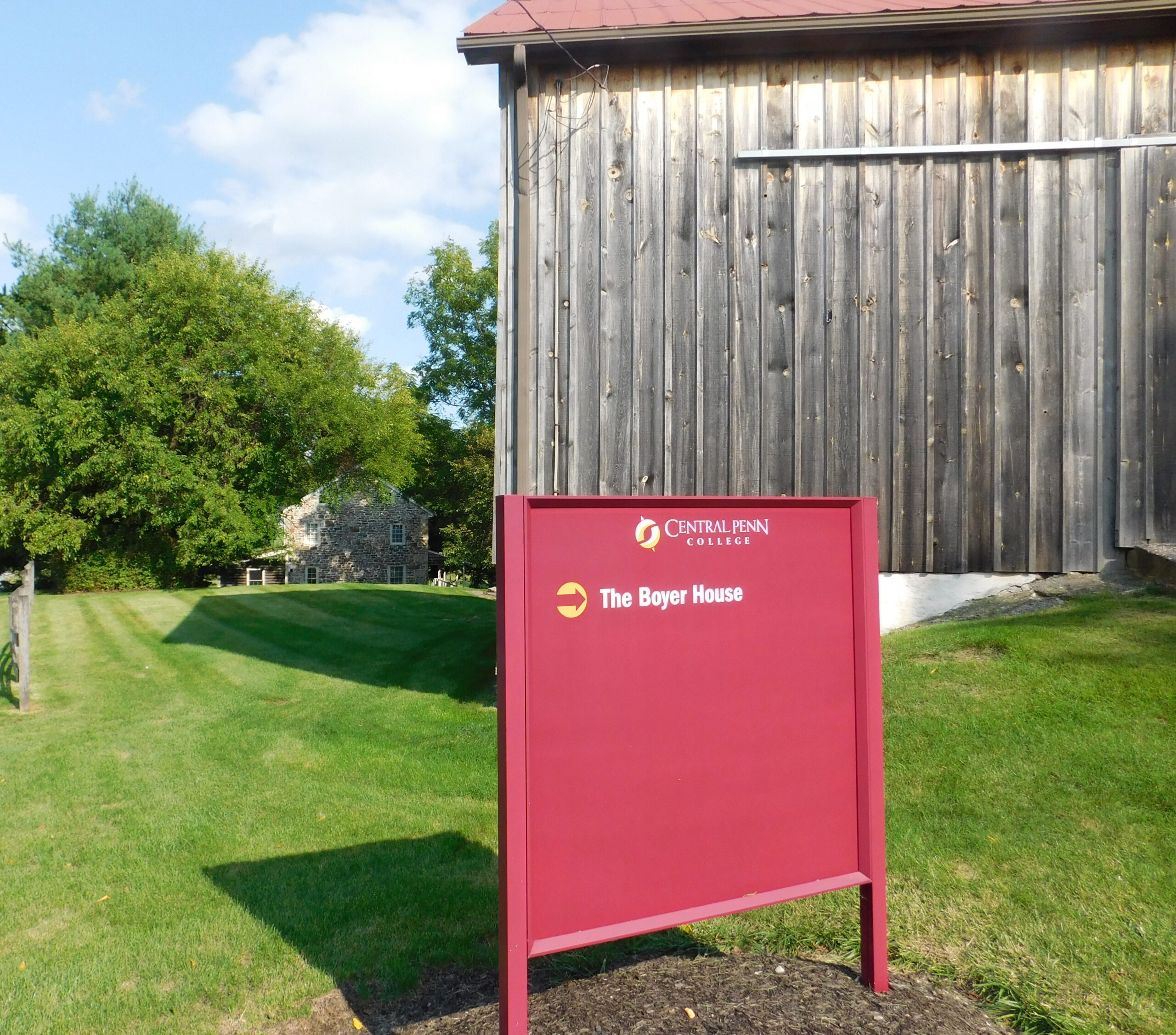
Photo by Michael Lear-Olimpi
But one characteristic of the Keystone State stands out among the rest, and includes all of Pennsylvania’s signature notables: It’s rich history.
From Independence Hall in Philadelphia – the city where our nation was born – to the hallowed battlefields of Gettysburg, and from the coal mines of the Anthracite Region and Western Pennsylvania to the story of steel that made Pittsburgh famous, people from other states and from within visit the commonwealth to explore and learn about its numerous historical locations, and to absorb the sense of spirit and legacy nestled among its cities and towns, and its forests and farms.
Even so, not every historical gem in the Keystone State is nationally known, but the character of those not widely heralded gems – their events and people, their place and impact – makes them no less fascinating.
In fact, one of those gems is on Central Penn College property: The Boyer House.

Treasure of the past
The Boyer House was named after the Boyer family that owned the land, and occupied the building now on Valley Road, and at least one other structure on the grounds, for at least 200 years.
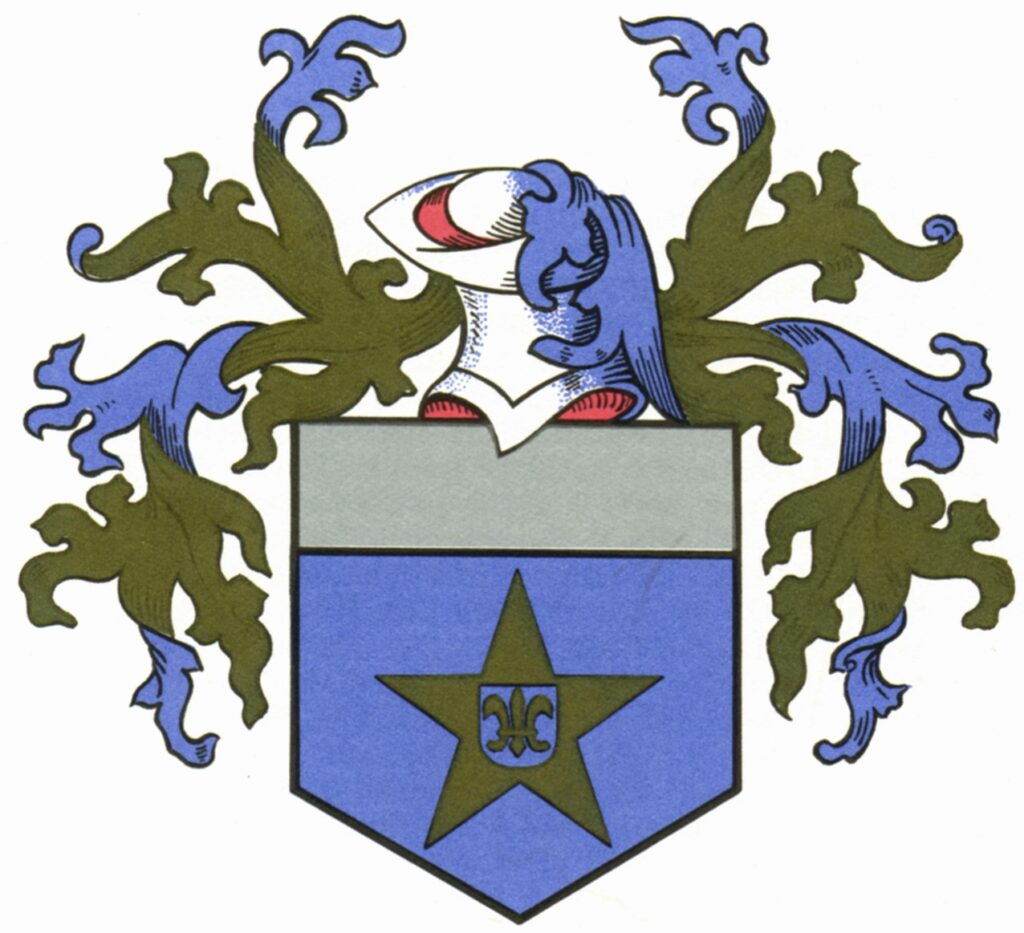
According to a history of the school on the college’s website, when Central Penn acquired the building, Todd Milano, then president of the college, promised the Boyer family he would restore the stone house, and dedicate it to the Boyer family.
He kept that promise and today, the Boyer House stands as a beautifully renovated monument to the Boyers and is where the current president of the college has her office.
In its existence, which quite likely spans two centuries, the building was home to seven generations of the Boyer family, according to college and other records. During that time, the house and barn stayed as they had been, except for some inside work in the 1940s and minor changes when Central Penn bought it.
It’s unclear from records exactly when the Boyers bought the land and built the house. What seems to be the case, however, is that John Harris appears to have been the first white man to purchase property in what is now East Pennsboro Township and was the first nonnative person to own the land on which the Boyer House rests. It wasn’t clear from research done for this article whether this John Harris was the Englishman who founded Harrisburg, but local historians said it probably was that John Harris.
According to Boyer family and other records, Harris purchased 311 acres of land in 1737 and, one month later, on Feb. 18, sold 290 acres of that land to Thomas Spray, of Darby, Chester County. That acreage included the 209 acres that would become the Boyer Farm.
Records show land purchased through Boyer family lineage as follows.
Philip Bayer (Boyer) was born in 1709 and was the son of Frederick Bayer, from Strassburg (the English spelling of Strasbourg), Germany. He and his wife, Susanna, had 13 children – all born in what would become Lebanon County.
Their youngest son – the only surviving son – John Peter, purchased 77 acres from the original Thomas Spray plot.
In 1794, a Jacob Boyer had possession of the 209 acres. He sold 78 acres to Christian and Barbara Blosser on April 15, 1794 (taking a portion of the property out of Boyer hands until May 5, 1810, when Peter and Anne Margaret Boyer purchased 77 acres of the land for 700 pounds), according to land-survey and tax-assessment records in the Cumberland County Historical Society’s Archives and Library.
The archives also has an assessment of the property that lists one house, and the land, in 1820.
Blair Williams, library and archives assistant director, said he could not in a short search find information on when any house on the property was built and so could not say that the house there now is the first house built on the land, or whether it was the one noted in the 1820 land survey.
Williams said, though, that it is reasonable to assume from the archives’ records that a house was built on that tract of land between 1810 and 1820. Williams and other local historians said some records from that time may not have survived and were not always carefully kept.
In 1829, John Peter – John and Peter are names that appear often in Boyer family records at the Historical Society of East Pennsboro Township and elsewhere in the region – sold the property to his son George. George and his wife, Elizabeth, had eight children. One of them, Philip, purchased the farm in 1883.
Moving along the history of the family’s land purchases, on Feb. 4, 1903, Philip and Susan Boyer sold 50 acres of land to the Pennsylvania Railroad.
The remaining acreage on which the house rests and that surrounds it stayed in the Boyer family until 1999 – when a Rob Boyer still lived in the house. Boyer died that year, according to Central Penn records, and on March 19, 1999, Central Penn purchased the property from Catherine A. Boyer.
At least one other house stood on the property at some time. It was a wood two-story structure called “the tenant house,” and resembled the current stone one. Some Boyers lived there, but it was torn down sometime in the 20th century.
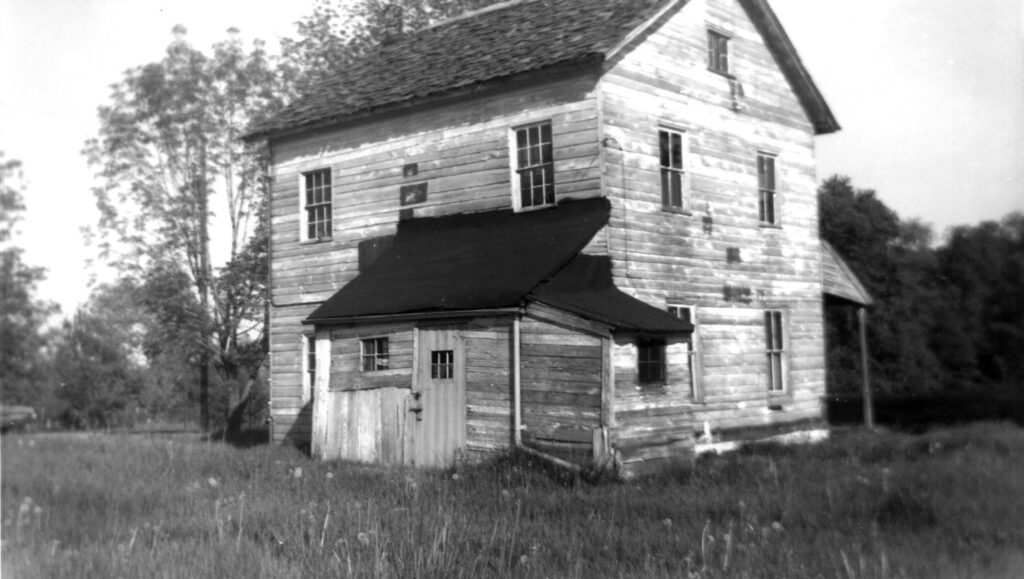
In July 2004, the Boyer family returned to the property to hold a 100-year reunion in Central Penn’s Conference Center. Many Boyer family members walked through the Boyer House, reuniting and basking in memories from long ago.
From family to history
Despite its historic status and the uncertainty of when it was built, the Boyer House was not always a renowned location in Summerdale. It was a farm and residence, but still very active.

Photo courtesy Betty Derick
Betty Derick, of Summerdale, grew up in the Boyer House with her family.
“I was born there in 1925 and so was my mother, Mabel Boyer, in 1902,” Derick, 97, stated. “I lived there until I was 20 years old, and while there we all did plain old farm work.”
Derick’s family had lived in the Summerdale area for decades before Central Penn College moved – it had been the Central Pennsylvania Business College, and other names – from downtown Harrisburg to Summerdale in 1970.
Her family had lived in the village for so long, in fact, that her grandmother told family members stories handed down about Native Americans living along the base of the Blue Mountain, which stands just north of the village.
Derick’s father, Alfred, worked on the nearby railroads. Derick’s grandfather, George Boyer, dug the waterlines for Summerdale with “a horse and scoop.”
And Derick’s mother and grandmother also served Summerdale by selling fresh milk to families in town.
“They would ride a horse and buggy around while people would come out with their pails and get milk,” Derick stated. “They were the milkman!”
According to Derick, the farmland encompassing the Boyer House spanned 60 acres, the whole way from Valley Road to Mountain Street, just north of Central Penn, at the northern end of the village – the last large street after Boyer Street.
Some of the farmland from that area remains. Members of Derick’s family had plots of land nearby.
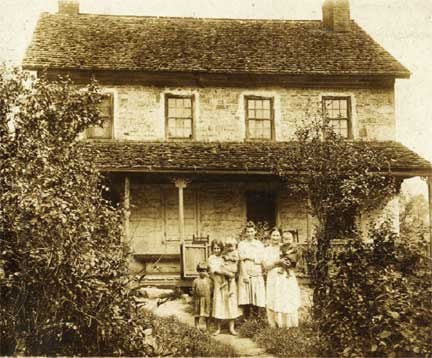
Photo courtesy Central Penn College
“My grandparents, George Boyer and Annie Roth-Boyer, owned the Boyer Farm,” Derick said. “My grandmother’s brother, Ferdinand Roth, owned the land where the (East Pennsboro) middle school sits. My grandmother’s sister, Virginia Roth-Gutshall, owned the land where the (East Pennsboro Area) high school sits. My grandmother’s brother, Grover Roth, had a farm on Orrs Bridge Road (Hampden Township) and my grandmother’s other brother, Tilden Roth, had a farm in Good Hope (Hampden Township).”
This extensive family history that grew within the walls of the Boyer House and the Summerdale area adds to the landmark’s brilliance and historical value. By uncovering such a deep narrative, it is clear that the building that now sits on the Central Penn campus is home to countless memories and priceless stories.
Stories of the land
Derick shared some of these stories to paint a picture of what she and her family experienced while living in the house and working the farm.
“We raised corn, wheat, oats and had a big garden (which said Derick sat between the house and the barn), where we grew fresh fruits and vegetables,” she said. “We also had an orchard, east of the house; we had apple trees, crab-apple trees, pear trees and quince trees.”
When asked about how the quince fruit tasted, she laughed.
“Not very good!” she said, “but there was one family in the Summerdale area that we would give the quince to, and the women of that family would make jelly out of it.”
Another memory came to Derick while speaking to The Knightly News, this one concerning her grandmother.
“My uncles worked in the fields during the day,” she recalled. “At around 10 each morning, my grandmother would make fried egg sandwiches and pack them a lunch that one of us kids would then take to them in the fields.
“One day, my grandmother had the lunches ready to go and she heard a knock on the door. My grandmother opened the door, and it was a poor hitchhiker, looking for something to eat. She gave him the packed lunch.”
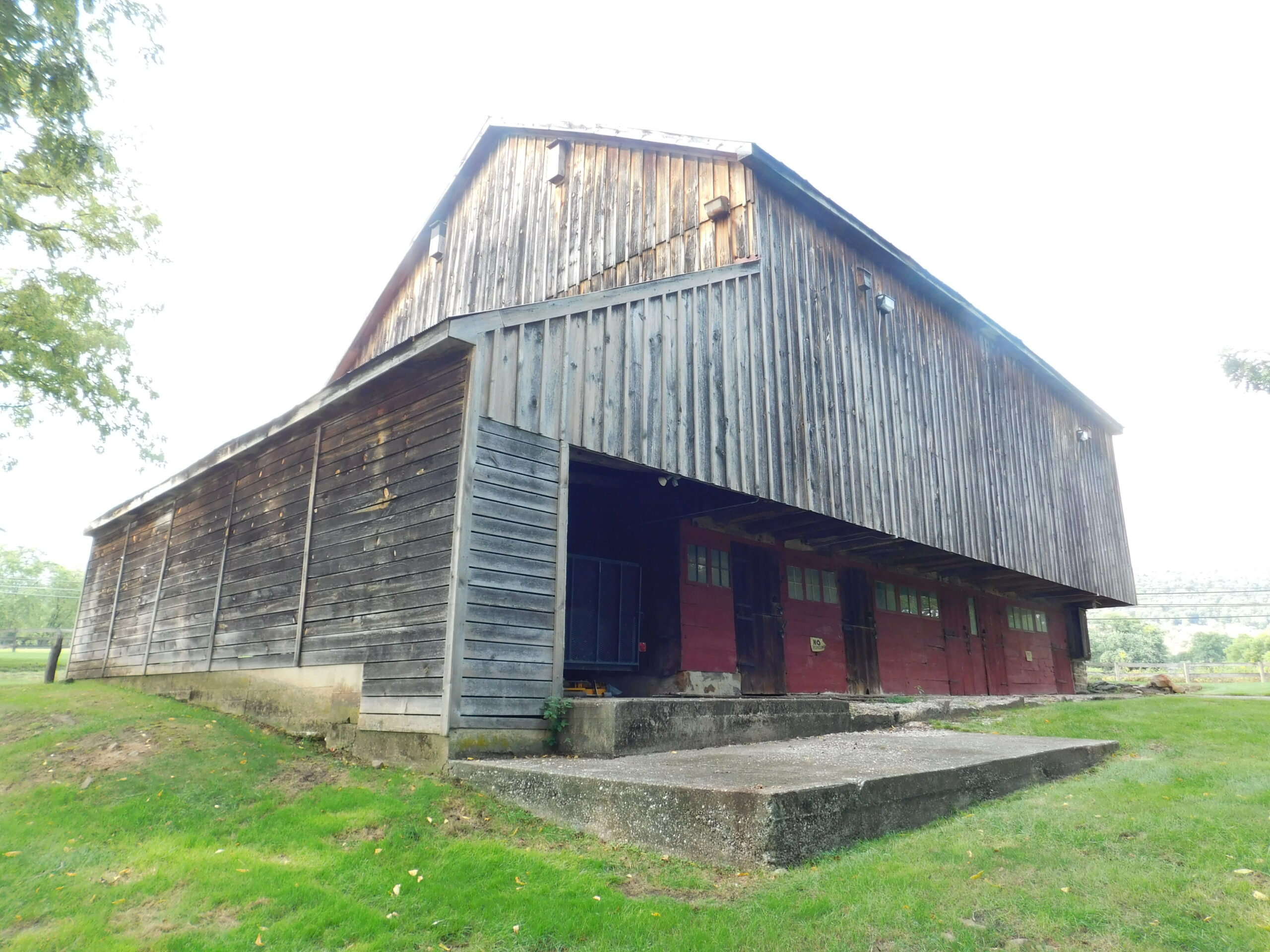
Derick said the railroads around the village were busy around that time, and the village saw its share of homeless people traveling through the area on trains. They would often disembark near the farms around Summerdale and pass through on the main road (which Derick’s family called the Old Road and which passed in front of their front porch, opposite where Valley Road is now), looking for something to eat.
“Some of them would knock on my grandmother’s door and she never turned them away, but she made sure they knew never to smoke in the barn if they stayed the night, lest something catch fire,” she said. “The travelers never caused any trouble.”
If these walls could talk …
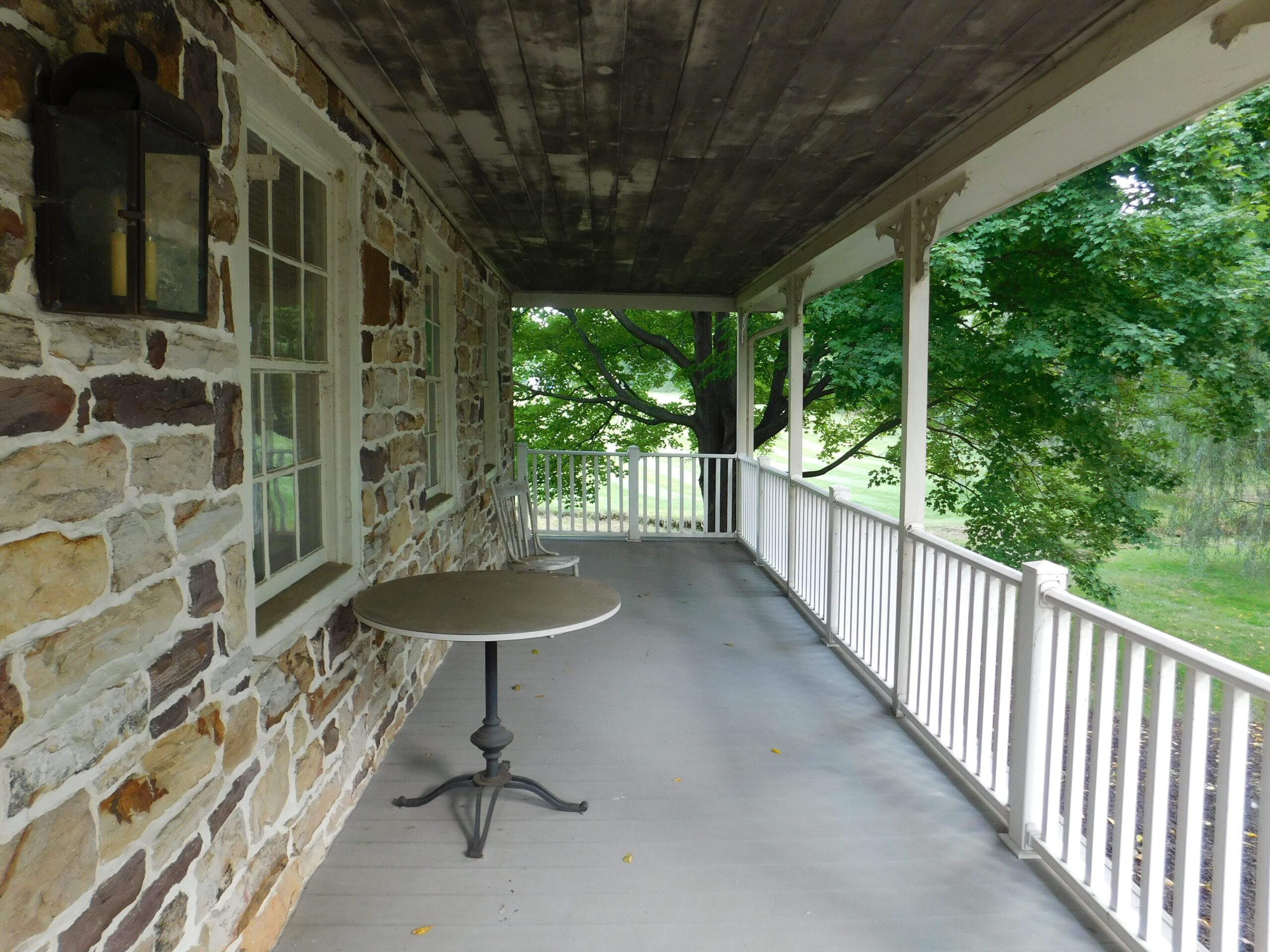
Though the land has many stories to tell, the Boyer House also saw history pass.
Derick said the house didn’t have electricity until she was a teenager and didn’t have running water until she was in high school.
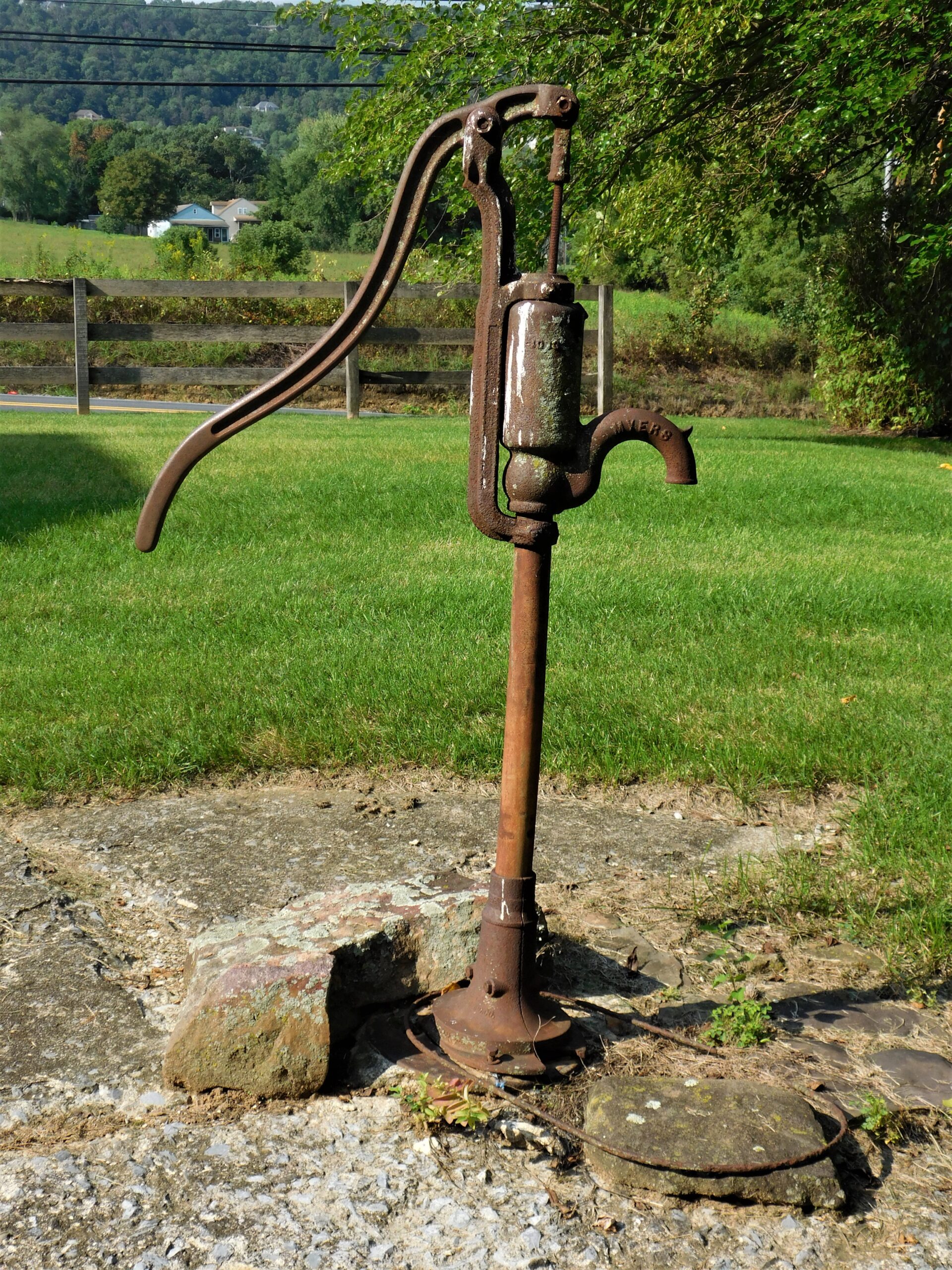
“We used kerosene lamps for light before we got electricity in the house around 1935-40,” she said. “For water, we carried a galvanized bucket to a water pump by the barn. Every time we needed water to drink, do laundry or cook, we carried the bucket to the pump. We always had a metal cup, too, that sat with the bucket; everyone drank out of the same cup when we were thirsty throughout the day.”
Derick also mentioned that while she lived there, the building had no heat during the winter, aside from their cook stove in the kitchen.
“We always celebrated holidays together in the Boyer House, with a big dinner on Easter, Christmas and Thanksgiving,” she recalled. “On Independence Day, we would make homemade root beer with extract.”
As for day-to-day doings in the village, Derick recalled that “It was a small town at the time. Everyone went to church, and it was always well-attended. You knew everybody and everyone was so friendly; everyone talked!”
Legacy
To Central Penn, the Boyer House has become a landmark of historical and campus significance. Not only does it represent a piece of Central Penn’s history and spirit, but it is also deeply ingrained in the history of Summerdale and the Boyer family.
“Historical artifacts now commemorate the history of the home and the family,” Central Penn President Linda Fedrizzi-Williams, whose office is in the Boyer House, said. “It has a place of honor among the many buildings on campus as it has served as the office location of three out of 10 CPC College presidents, a president emeritus, two college vice presidents, and a few additional staff members. While making it functional for day-to-day operations, we have been careful to preserve and maintain the unique character of this home.”
The Boyer House was home to The Knightly News Media Club’s podcast studio for two years, before relocating to Milano Hall to accommodate office needs in the house.
It is a good sign that the Boyer House is present, and in the minds of the Central Penn College community, and of the people of Summerdale and the surrounding area.
As many historians and philosophers have indicated, we must not forget our past unless we wish to forget ourselves.
For more information on the Boyer House, contact the Historical Society of East Pennsboro Township, at (717) 732-5801. Office hours are Tuesday and Thursday from 9 a.m. to 3 p.m.
The Association of American Boyers Inc., founded in 1904, maintains family histories, holds gatherings (including reunions) and has resources for research on the family.
Bowman is co-president of The Knightly News, CPC Film Series reviewer and a club photographer.
Comments or a story idea? Contact KnightlyEditors@CentralPenn.Edu.
Edited by media-club co-adviser and blog editor Professor Michael Lear-Olimpi, who contributed reporting to this story.

